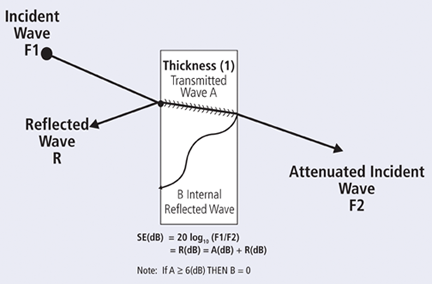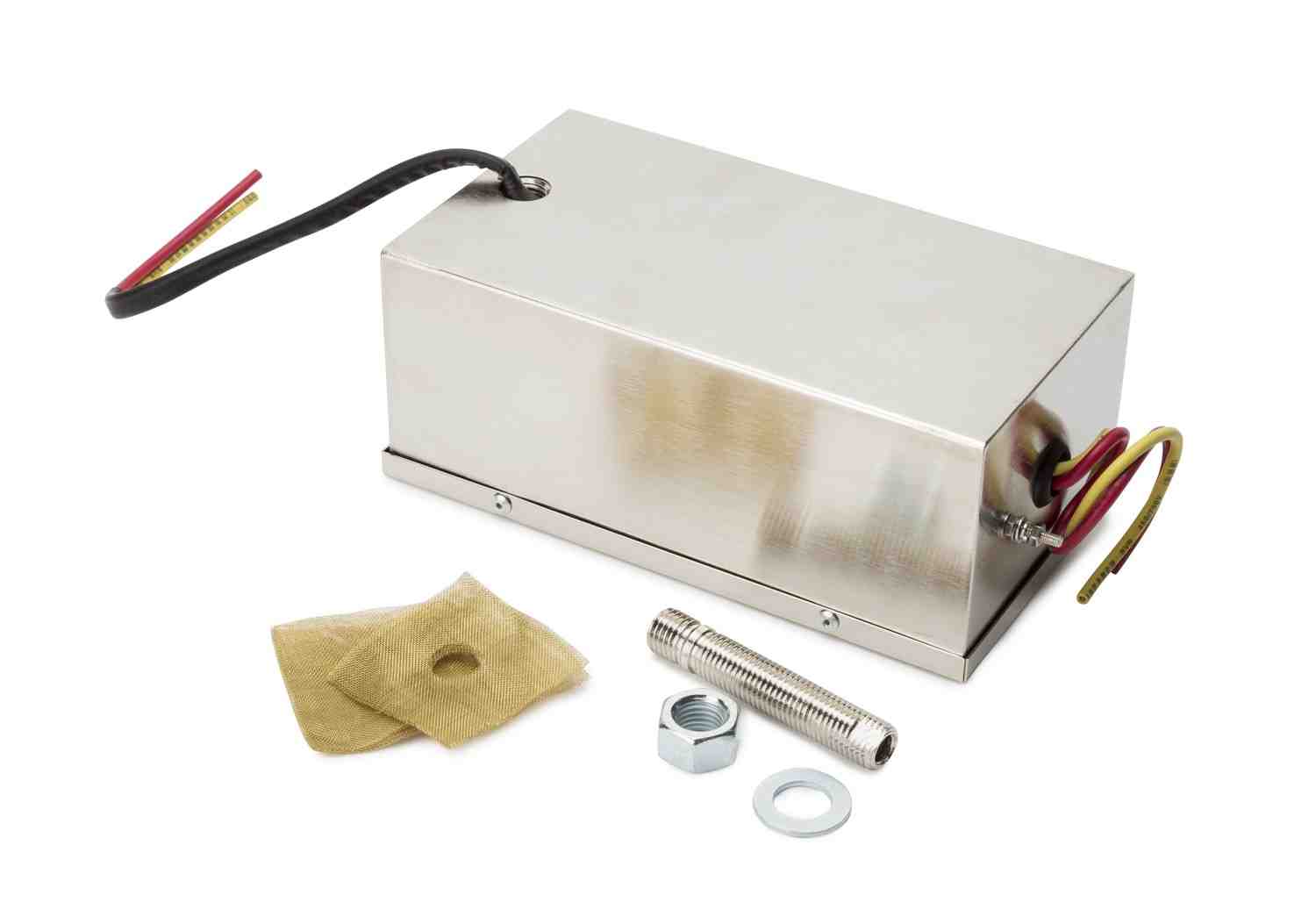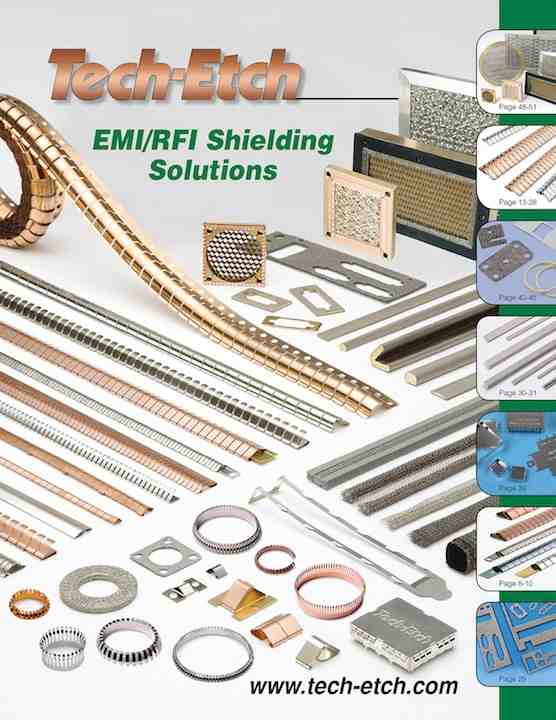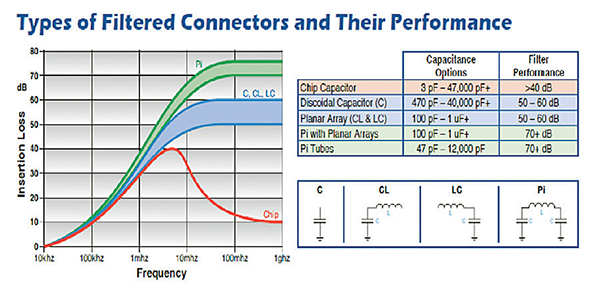This article is part of TechXchange: Diving Deep into EMI, EMC, and Noise
Members can download this article in PDF format.
Suppression of RF EMI will require several solutions that designers can implement in their board design or with shielding materials. Proper electromagnetic shielding will help minimize or even block electromagnetic interference (EMI) for a circuit designer’s best and creative RF electronic design.
This article presents techniques for effectively employing EMI shielding and filtering. It not only enables proper operation of the electronic design, but also speeds up time to market.
Where Does Typical RF EMI Come From?
Contents
- 1 Where Does Typical RF EMI Come From?
- 2 Electromagnetic Shielding
- 3 Electrostatic Shielding
- 4 EMI Filtering for RF Designs
- 5 Summary
- 6 References
- 7 How can you reduce electromagnetic radiation in your home?
- 8 Why shielding is important in mitigating EMI?
- 9 What is an RF shield?
- 10 How can I shield electronics from EMI?
- 11 Does aluminum foil stop radiation?
- 12 Why do shields pick up cavities?

Interconnects can be one of the main carriers of RF EMI signals. A major “RF” offender would be any signal that falls into one of the allocated radio bands as defined by governments around the world. Conductors carrying an RF signal at high frequencies will generate harmonic electric and magnetic fields that can cause a replica of the signal to be received by a neighboring interconnect.
Switching harmonics, generated by switching or power converters, will also generate high radiated and conducted EMI that appears at the switching power converter outputs.
Furthermore, RF EMI can emanate from harmonic switching or even switching states of digital signals. This type of noise can appear as a capacitively or inductively induced pulse in nearby interconnects and cables, rather than as random noise.
Finally, RF EMI from external sources can come from an electrostatic discharge (ESD), which can drive a broadband pulse into your system design or even be injected as conducted EMI through a power input.
Electromagnetic Shielding

Electromagnetic shielding will reduce an electromagnetic field from entering an RF design by blocking the field with various barriers constructed of conductive or magnetic materials. Shielding is generally applied to cabinets to isolate electrical/electronic devices from their noisy environments.
In addition, shielding is applied to cables to isolate the wires from the environment through which the cable passes. Electromagnetic shielding, which blocks radio frequency electromagnetic radiation, is known as RF shielding. Shielding can also reduce the coupling of radio waves, electromagnetic fields, and electrostatic fields in a designer’s circuit.
A conductive housing, used to block electrostatic fields, is called a Faraday cage. The amount of EMI reduction is highly dependent on the material used, its thickness, the size of the shielded volume, and the frequency of the fields of interest. Other factors include the size, shape and orientation of any openings in the shield to an incident electromagnetic field.
Electrostatic Shielding

The susceptibility/sensitivity to static electricity (known as electrostatic discharge, or ESD) in high speed, high power density electronic circuits is much higher compared to their low speed, low power density circuits.
Static electricity, which is external to your design, can cause catastrophic failures in your circuit design. To help prevent any high-level external electric fields from damaging your design, using electrostatic shielding will create a barrier to effectively insulate your circuit.
Electrostatic shields may include small openings that are permitted in electrostatic shields, since the electric field within the cavity is relatively small for such openings. This type of shielding also reduces ventilation costs. These openings are also sometimes used for wiring or wiring, as well as access points to internal circuits.
EMI Filtering for RF Designs

Passive filtering is a method that will reduce conducted emissions from an electronic circuit by using inductors and capacitors to create an impedance mismatch in the EMI current path. Active filtering can also be used to detect the voltage on the input bus and produce an opposite-phase current that will directly cancel the EMI current generated by a switching stage.
The figure demonstrates a simplified passive and active filter circuit where iN is the current source and ZN is the Norton equivalent circuit impedance for differential mode noise of a DC-DC regulator.
The filter design shown in the figure can be used in automotive applications. The active filter uses voltage sensing and current injection, which will allow for a low EMI signature and lead to reduced footprint and volume, as well as improved solution cost. The integration of an active EMI filter (AEF) circuit, which uses a synchronous buck controller, helps resolve trade-offs between low EMI and high power density in DC-DC regulator applications.
Summary

RF shielding is the practice of blocking RF electromagnetic signals, EMI, which can cause radio frequency interference (RFI). RFI can severely decrease the performance of electronic circuits or even render proper circuit functions completely useless.
RF shielding is a means of protecting a circuit designer’s devices and equipment from the harmful effects caused by RFI. This can be done by installing barriers around potential sources, as well as victims, of electromagnetic fields. RFI filtering is achieved within the electronics via circuitry that will only allow desired signals to pass through and reject unwanted RFI signals.
Read more articles on TechXchange: Diving Deeper into EMI, EMC and Noise
References
1. “Ten Tips for Successfully Designing with Automotive EMC/EMI Requirements”, Texas Instruments.
2. “How to reduce EMI and downsize the power supply with a built-in active EMI filter”, Texas Instruments.
How can you reduce electromagnetic radiation in your home?
These approaches involve reducing the level and duration of exposure.
- Turn off wireless functions. Wireless devices — including routers, printers, tablets and laptops — emit a Wi-Fi signal. …
- Replace wireless devices with wired devices. …
- Keep EMF sources away. …
- Use your smartphone safely. …
- Prioritize sleeping areas.
Why shielding is important in mitigating EMI?
EMI shields are designed to prevent radiated emissions from exceeding a certain point. EMI shielding solutions can protect a device from external radiation and prevent that device from emitting radiation that could interfere with other devices.
Why is RF shielding important? RF Shielding and Magnetic Shielding RF shielding is specific for blocking radiofrequency electromagnetic radiation. Shields effective in blocking RF waves, as well as other types of waves, are sometimes referred to as EMI/RFI or EMF shields.
What is EMI shielding effectiveness?
Electromagnetic Interference Shielding (EMI) refers to the reflection and/or adsorption of electromagnetic radiation by a material, which thus acts as a shield against the penetration of radiation through the shield.
What do you mean by shielding effectiveness?
3.1 Definition of Shield Effectiveness Shield effectiveness (SE) is normally defined as the ratio of the magnitude of. the incident electric field, E; to the magnitude of the transmitted electric field, E; SE= ~i. Et. SE(dB) =20.IOglO(~:J.
What is EMI shielding efficiency?
About EMI shielding effectiveness Test results show that a shielding effectiveness of 40 dB provides 99 percent attenuation of electromagnetic radiation (EMI/RFI), while a shielding effectiveness of 40 dB is the minimum desired in most applications. .
Why is EMI shielding important?
The main purpose of effective EMC shielding is to prevent electromagnetic interference (EMI) or radio frequency interference (RFI) from affecting sensitive electronic components. This is achieved by using a metal screen to absorb the electromagnetic interference being transmitted through the air.
Why is shielding important?
Shielding reduces electrical noise and reduces its impact on signals and also reduces electromagnetic radiation. Shielding prevents crosstalk between cables close together. Shielding not only protects the cable, but can also protect machines and people.
Why are EMI considerations important?
Why is EMI shielding important? Electromagnetic interference (EMI) can disrupt electronic devices, equipment and systems used in critical applications.
Why is shielding important?
Shielding reduces electrical noise and reduces its impact on signals and also reduces electromagnetic radiation. Shielding prevents crosstalk between cables close together. Shielding not only protects the cable, but can also protect machines and people.
Why should shielding be provided to insulators?
The purposes of insulation shielding are: Eliminating tangential and longitudinal stresses on the insulation surface. Exclude from the dielectric field those materials such as braids, tapes and fillers that are not intended for insulation. Protect cables from medium induced or direct voltages.
What is the purpose of shielding in cables?
All electrical cables radiate energy and capture energy from their surroundings. As such, shielding can also be used to contain electromagnetic energy radiated by a cable, which can protect nearby sensitive components.
What is an RF shield?
Radio frequency (RF) shielding is a solution used to block radio frequency interference. It involves building an enclosure to reduce electrical and magnetic transmissions from one space to another.
What is the use of RF shielding box? The technique by which a certain area/space is restricted from electromagnetic (EM) or radio frequency waves is called RF shielding and the housing designed for this purpose is called an RF shielding housing. Magnetic and conductive materials are used to do this task of shielding RF waves.
Are RF shields necessary?
RF shielding is required for FCC modular approval.
What is RF shield room?
RF shielded rooms provide the quiet RF environment needed to perform many different application tests such as EMC, wireless technology in automotive or military vehicles, MRI scans, etc.
What do RF shields do?
Electromagnetic shielding that blocks radio frequencies and electromagnetic radiation is also known as RF shielding. Shielding can reduce the coupling of radio waves, electromagnetic and electrostatic fields.
How do you shield a RF signal?
Aluminum. Aluminum is a versatile component when it comes to RF shielding. It can be used as a foil to block low frequency radio fields, or it can be integrated into the construction to provide a built-in shield against radio frequencies.
How do you shield RF interference?
Never wind the cable to excessive length. Use cables with heavy gauge shields. Cables with foil shield and drain wire have a much higher common impedance coupling than those with braided copper shield, increasing power line noise coupling. Multiple shields do not provide enhancements unless they are connected at both ends.
How does RF shielding work?
The main purpose of effective EMC shielding is to prevent electromagnetic interference (EMI) or radio frequency interference (RFI) from affecting sensitive electronic components. This is achieved by using a metal screen to absorb the electromagnetic interference being transmitted through the air.
How do you shield RF interference?
Never wind the cable to excessive length. Use cables with heavy gauge shields. Cables with foil shield and drain wire have a much higher common impedance coupling than those with braided copper shield, increasing power line noise coupling. Multiple shields do not provide enhancements unless they are connected at both ends.
Is RF shielding necessary?
That’s what makes RF shielding so important in design. With an enclosure built around the app, devices have the defensive shield they need to reduce transmissions between different spaces and successfully block RF interference.
How can I shield electronics from EMI?
This is achieved by using a metal screen to absorb the electromagnetic interference being transmitted through the air. The shielding effect is based on a principle used in a Faraday cage – the wire mesh completely surrounds the sensitive electronics or transmission electronics.
How can I protect my electronics from EMI? Particle-filled silicone is another option used to protect against EMI because of its resistance to sunlight, water and different temperatures. Composite materials such as carbon fiber reinforced plastics (or “CFRPs”) are also growing in popularity due to their excellent strength-to-weight ratio.
How can I block EMI?
The answer lies in EMI shielding – this is the practice of blocking the electromagnetic field by blocking with barriers made of conductive or magnetic materials. You will find EMI shielding on your cell phones, on the microwave oven door, as well as on your computers and keyboards.
What can I used to remove EMI from the power source?
Separating power and signal cables, as well as using twisted-pair cables and reduced cable length, can cut wire and cable contribution to EMI. Many other cable and wire integration and installation techniques can be used to reduce EMI. Good cabinet design can also reduce EMI.
What material can block EMF?
Copper is the most reliable material of choice for shielding from radio frequencies because of its ability to absorb both magnetic and radio waves. It is also highly effective in attenuating magnetic and electrical waves.
What is EMI shielding material?
Introduction. Electromagnetic Interference (EMI) shielding refers to shielding radio waves or microwave radiation so that radiation essentially cannot penetrate the shield, which serves as a radiation barrier. EMI shielding must be distinguished from magnetic shielding.
What is the purpose of EMI RFI shielding?
EMI shielding and RFI shielding reduce the susceptibility of electronic malfunctions by blocking unwanted external electromagnetic waves or preventing internal electromagnetic waves from emitting and interfering with other circuits or devices.
What does an EMI shield do?
The main purpose of effective EMC shielding is to prevent electromagnetic interference (EMI) or radio frequency interference (RFI) from affecting sensitive electronic components. This is achieved by using a metal screen to absorb the electromagnetic interference being transmitted through the air.
Does foil block EMI?
Aluminum. Due to its strength-to-weight ratio and high conductivity, aluminum can work well as an EMI shielding material.
What metal blocks EMF best?
Copper is the most reliable material of choice for shielding from radio frequencies because of its ability to absorb both magnetic and radio waves. It is also highly effective in attenuating magnetic and electrical waves.
How can I shield against EMI?
Today, EMI shielding materials include flexible metal screens, metal wires, and metal foams. Coatings made from metallic inks are also applied to the interior of electronics cabinets to provide an EMI shielding solution.
Does aluminum foil stop radiation?
Does aluminum foil protect against radio frequency radiation? Aluminum foil blocks or shields radio frequency waves. Because aluminum is a conductor of electricity, it forms a barrier often called a Faraday cage, completely stopping radio waves.
What material can block EMF? Copper is the most reliable material of choice for shielding from radio frequencies because of its ability to absorb both magnetic and radio waves. It is also highly effective in attenuating magnetic and electrical waves.
Does aluminum foil block cell signal?
Wrapping a cell phone in aluminum foil creates a Faraday cage. As cell phone signals are electronic, aluminum foil prevents the signal from reaching the cell phone.
Does aluminum absorb radiation?
All types of radiation from nuclear decay can be stopped by aluminum if it is thick enough. Personal experience; at least 30 cm from the Sr 90 isotope (beta source). Alpha particles can be absorbed by a thin sheet of paper or by a few centimeters of air.
How much aluminum is toxic?
It is based on taste, smell or color. The Occupational Health and Safety Administration (OSHA) has limited worker exposure to aluminum dust to 15 milligrams per cubic meter (mg/m3) (total dust) and 5 mg/m3 (breathable fraction) of air for a working day of 8 hours, 40 hours work week.
Is Aluminium toxic for humans?
Oral exposure to aluminum is generally not harmful. Some studies show that people exposed to high levels of aluminum can develop Alzheimer’s disease, but other studies have not found this to be true.
What radiation does aluminum block?
There are three types of radiation: alpha particles, beta particles and gamma rays. Beta particles can be blocked by aluminum foil, but gamma rays require several inches of lead, concrete or steel to stop.
What radiation does aluminium block?
Alpha particles cannot pass through the paper, but beta particles and gamma rays can. When all three types of radiation hit aluminum, only gamma rays pass through. Beta particles can pass through the paper, but aluminum prevents them. When gamma radiation hits concrete, energy is absorbed.
Does aluminium protect against radiation?
The usual method for radiation shielding is material shielding by spacecraft and equipment structures (usually aluminum), possibly augmented by polyethylene in manned spaceflight, where the primary concern is high-energy protons and cosmic ray ions.
Why do shields pick up cavities?
A shielded guitar cavity will go a long way in preventing interference from reaching your signal. Shielded wire leaves your volume and tone pots exposed, so protecting the cavity better protects your guitar.


